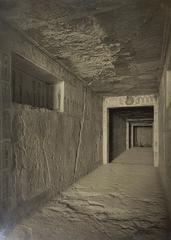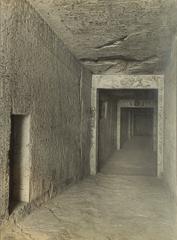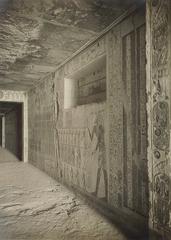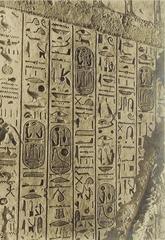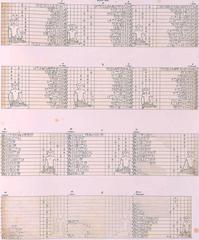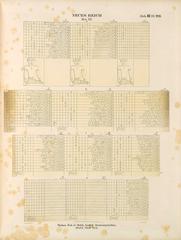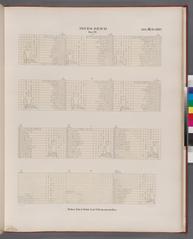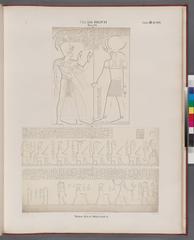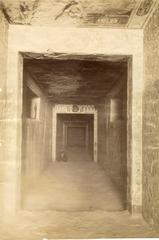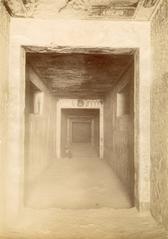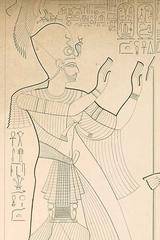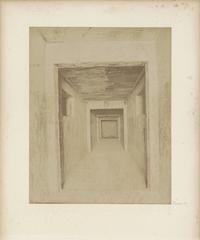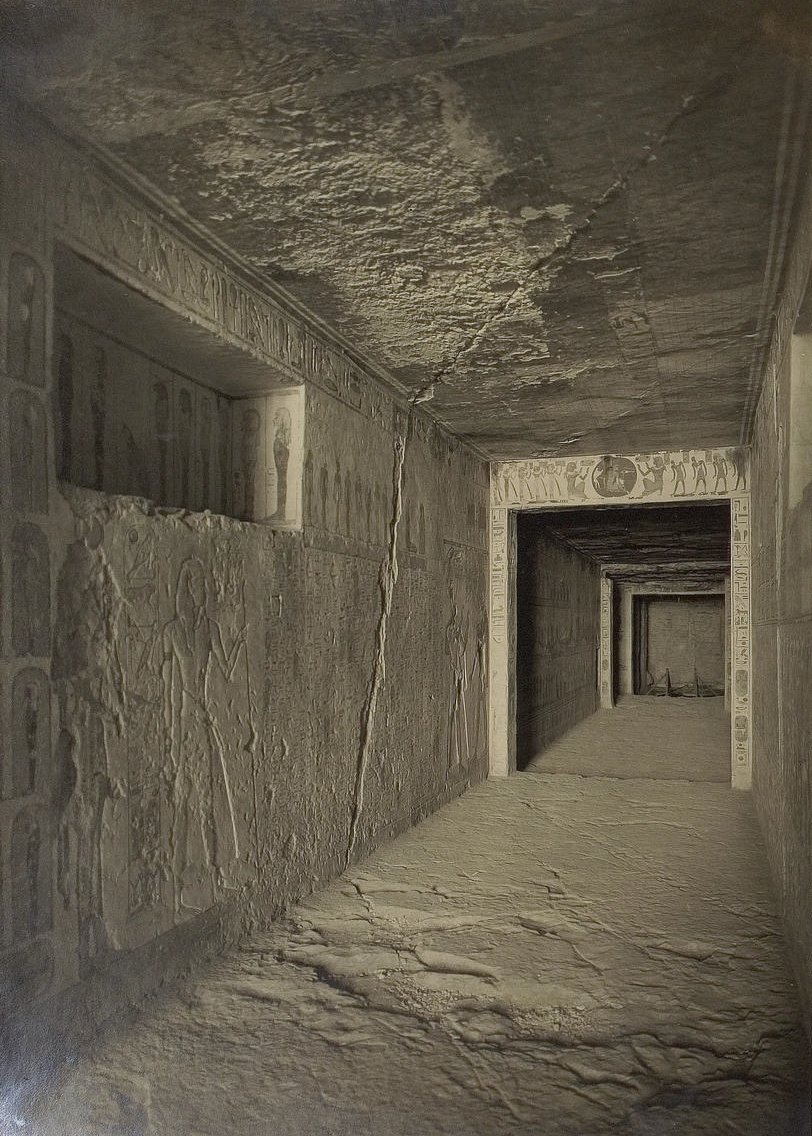
KV6 Luxor: Visiting Hours, Tickets, and Historical Significance Guide
Date: 14/06/2025
Introduction to KV6 in Luxor
The Valley of the Kings in Luxor is a testament to the grandeur and complexity of Egypt’s New Kingdom. Among its many royal tombs, KV6—the tomb of Ramesses IX—stands out for its artistic brilliance and the insight it offers into the religious and political climate of the late 20th Dynasty. Ramesses IX ruled during turbulent times (c. 1129–1111 BCE), yet his tomb reflects the enduring spiritual beliefs and funerary traditions of ancient Egypt. The architectural layout and vibrant wall paintings, especially the astronomical ceiling depicting Nut and star charts, make KV6 a highlight for visitors seeking to connect with Egypt’s ancient past (closerlives.com; weseektravel.com).
This guide provides detailed information about KV6’s historical context, artistic features, and practical visitor guidance—including visiting hours, ticketing, accessibility, and travel tips. Whether you are a dedicated Egyptologist, a history enthusiast, or a traveler planning your first trip to Luxor, understanding KV6’s unique place within the Valley of the Kings will enhance your appreciation of this UNESCO World Heritage site (exploreluxor.org; talesfromthelens.com).
Table of Contents
- Introduction
- Historical Background of KV6
- The Valley of the Kings: Burial Practices and Necropolis Layout
- KV6 Tomb Architecture and Decoration
- Archaeological Discoveries and Conservation
- Visitor Information: Hours, Tickets, and Accessibility
- Practical Tips and Site Etiquette
- Nearby Attractions and Combining Your Visit
- Frequently Asked Questions (FAQ)
- Conclusion
- References
Historical Background of KV6
The Reign of Ramesses IX
Ramesses IX, the eighth ruler of Egypt’s 20th Dynasty, reigned for about 18 years in a period marked by economic hardship, internal strife, and the growing influence of the Amun priesthood (closerlives.com). Despite these challenges, his tomb in the Valley of the Kings reflects the persistence of royal funerary traditions and the pharaoh’s divine status.
The Valley of the Kings and Shifting Royal Burials
The Valley of the Kings, on Luxor’s West Bank, became the main burial site for New Kingdom pharaohs as a response to the vulnerability of pyramid tombs to looting. Between the 16th and 11th centuries BCE, over 60 tombs were carved into the cliffs, with KV6 among the most accessible and visually impressive (intrepidscout.com; timetravelturtle.com).
KV6 Tomb Architecture and Decoration
Layout and Construction
KV6 is centrally located in the Valley, between tombs KV5 and KV55 (wikipedia.org). Its straight-axis design extends 105 meters into the Theban cliffs, typifying late New Kingdom royal tombs. The entrance ramp and three wide corridors lead to a pillared hall and the main burial chamber. Four side chambers off the first corridor were left unfinished (madainproject.com).
Construction appears to have been rushed, as shown by unfinished decoration in the deeper chambers and evidence of reused decorative elements. The burial chamber was hastily enlarged to accommodate the sarcophagus, reflecting the pharaoh’s sudden death (closerlives.com; thetraveltinker.com).
Decorative Program and Artistic Features
KV6’s vibrant wall paintings, especially in the entrance corridor, are among the best preserved. The tomb displays:
- Book of the Dead: Spells and vignettes for the king’s safe passage.
- Book of Gates and Book of Caverns: Scenes of the sun god’s nocturnal journey and the afterlife’s challenges.
- Astronomical Ceiling: In the burial chamber, the goddess Nut stretches across a deep blue sky, surrounded by star charts and celestial motifs (flashpackingfamily.com). The west wall depicts Ramesses IX on his solar barque, attended by deities.
The artwork is characterized by bold outlines, vivid colors, and a schematic style typical of the late Ramesside period, with some unfinished areas attesting to the tomb’s incomplete state (weseektravel.com).
Archaeological Discoveries and Conservation
Ramesses IX’s original sarcophagus is lost, but his mummy was discovered in 1881 at Deir el-Bahri (DB320) among other royal remains, testifying to the widespread looting and reburial practices of the late New Kingdom (closerlives.com). The tomb itself has been open since antiquity, as indicated by Coptic and Roman graffiti (madainproject.com).
Ongoing conservation efforts focus on preserving KV6’s delicate wall paintings by regulating visitor numbers and rotating open tombs. Visitors play a crucial role in preservation by adhering to site etiquette and photography regulations.
Visitor Information: Hours, Tickets, and Accessibility
Visiting Hours
KV6 is generally open daily from 6:00 or 6:30 AM to 5:00 or 6:00 PM depending on the season. Hours may be reduced during Ramadan or for conservation work. Always check the latest hours via official resources or your tour provider (exploreluxor.org; egymonuments.com).
Tickets
Tickets are available at the Valley of the Kings visitor center or online (egymonuments.com). As of 2025:
- General Admission: 600–750 EGP for foreign adults (covers three tombs from a rotating selection, usually including KV6).
- Premium Tombs: Separate tickets for tombs like Seti I or Ramses V/VI.
- Discounts: Reduced rates for students and Egyptian nationals with valid ID.
The ticket acts as a punch card—each tomb you enter is marked, and after three entries, the ticket is no longer valid for additional tombs (talesfromthelens.com).
Accessibility
KV6 is among the most accessible tombs in the Valley, featuring a wide, sloping entrance and spacious corridors. However, uneven flooring and low lighting can pose challenges—wheelchair users may require assistance, and there are no elevators or ramps within the tombs (herasianadventures.com).
Facilities
- Restrooms, café, and gift shop are located at the main entrance.
- Shuttle trams transport visitors from the ticket office to the tomb area.
- Bring your own water and sun protection; shade is limited.
Practical Tips and Site Etiquette
- Best Time to Visit: Early morning for cooler temperatures and fewer crowds; October–April is the most comfortable season (best-time.to).
- What to Wear: Modest, breathable clothing; closed-toe shoes; sun hat and sunscreen.
- Photography: Non-flash photography is generally permitted with a camera ticket. Tripods and flash are prohibited (flashpackingfamily.com).
- Preservation: Never touch walls or paintings. Respect all barriers and staff instructions.
- Guides: Hiring a licensed guide or joining a tour is highly recommended for deeper insight (privatetoursinegypt.com).
- Restrooms: Use facilities at the main entrance before heading to the tombs.
- Tipping: Modest tips for assistance are customary.
Nearby Attractions and Combining Your Visit
- Other Tombs: KV5, KV55, and the tombs of Ramses III, Ramses IV, and Tutankhamun (KV62) are nearby (special ticket required for some).
- Temples: Karnak and Luxor temples on the East Bank offer further exploration of ancient Egyptian religion.
- Visitor Center: Check the map for open tombs and plan your route accordingly.
Frequently Asked Questions (FAQ)
Q: What are the opening hours for KV6?
A: Generally from 6:00–6:30 AM to 5:00–6:00 PM; check current hours before visiting.
Q: Do I need a separate ticket for KV6?
A: KV6 is usually included in the general admission ticket, but always confirm which tombs are open.
Q: Is KV6 accessible to visitors with mobility issues?
A: KV6 is among the more accessible tombs, with a sloped entrance and wide corridors, but some uneven surfaces remain.
Q: Can I take photos inside KV6?
A: Non-flash photography is permitted with a camera ticket; flash and tripods are prohibited.
Q: Are there guided tours?
A: Yes, licensed guides are available at the visitor center or through tour operators.
Conclusion
KV6, the tomb of Ramesses IX, offers a compelling blend of artistic achievement, historical intrigue, and accessibility. Its vibrant wall paintings, astronomical ceiling, and central location make it a highlight for visitors to Luxor’s Valley of the Kings. By planning your visit carefully—paying attention to opening hours, ticketing, and preservation guidelines—you can fully appreciate the tomb’s significance and ensure its protection for future generations. For the most current information, consult official resources and consider guided tours or virtual explorations to enrich your experience.
References and Further Reading
- KV6 Tomb of Ramesses IX: Visiting Hours, Tickets & Historical Guide to the Valley of the Kings, CloserLives
- Best Tombs in the Valley of the Kings, We Seek Travel
- Things to Know Before Visiting the Valley of the Kings, Tales from the Lens
- Tomb of Ramesses IX, Explore Luxor
- Luxor Entrance Fees, Explore Luxor
- KV6 - Wikipedia
- Valley of the Kings Guide, Flashpacking Family
- Valley of the Kings Complete Guide, The Travel Tinker
- Best Tombs to Visit in the Valley of the Kings, Earth Trekkers
- Luxor Valley of the Kings Tombs, Herasiana Adventures
- Official Egyptian Ministry of Tourism and Antiquities
